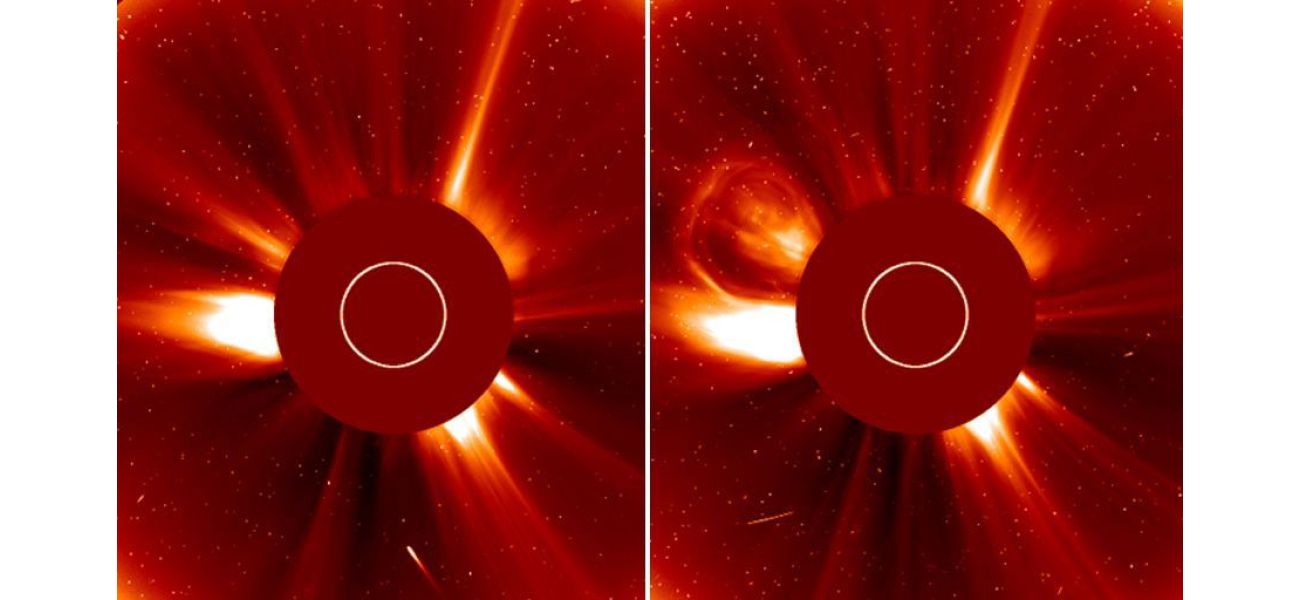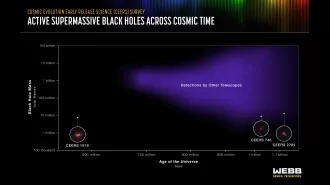SOHO spacecraft captures last moments of Halloween comet.
The "Halloween comet" broke apart while passing by the sun, and the ESA and NASA witnessed its demise.
October 30th 2024.

A cosmic spectacle recently captivated the attention of astronomers and space enthusiasts alike. It was the demise of a comet affectionately dubbed the "Halloween comet," which met its fate during its closest approach to the sun. The European Space Agency and NASA's Solar and Heliospheric Observatory mission were able to capture mesmerizing footage of the comet's final moments.
The comet, officially known as C/2024 S1, was first discovered on September 27 by astronomers using an Asteroid Terrestrial-impact Last Alert System in Hawaii. Its luminous appearance sparked excitement and garnered the playful nickname, as some speculated that it might be visible in the night sky by the end of the month. However, as it drew closer to its perihelion (the point in its orbit closest to the sun), the comet began to break apart into smaller pieces until it eventually evaporated, according to NASA.
C/2024 S1 was what's known as a "sungrazer" comet, meaning it passes within a dangerously close distance of the sun, about 1,367,942 kilometers. Due to the intense heat and powerful atmosphere of the sun, sungrazers often meet their untimely demise by vaporization.
Karl Battams, a computational scientist at the Naval Research Laboratory in Washington, DC, and principal investigator for the Large Angle and Spectrometric Coronagraph instrument suite, explained the uncertainty surrounding comets. "Comets are notoriously difficult to predict, and sungrazing comets like this one are even more unpredictable. At the time of its discovery, astronomers were unsure whether it would survive its close encounter with the sun, highlighting the elusive nature of these celestial bodies."
On Monday at 7:30 a.m. ET, the comet reached its perihelion and was completely vaporized as it passed within just 1% of Earth's distance from the sun, less than a million miles away. To put that into perspective, another comet, C/2023 A3 Tsuchinshan-ATLAS, which also reached its perihelion on September 27, was at least three times farther away from the sun than Earth. This goes to show how rare it is for a sungrazing comet to survive its close encounter with the scorching star.
Karl Battams, in an email interview with CNN, further explained the rarity of these events. "Statistically, it is extremely unlikely for a sungrazing comet to survive its journey past the sun." As the lead for NASA's Sungrazer Project, a citizen science project that discovers previously unknown comets, Battams has discovered over 4000 sungrazing comets, and not a single one has made it past its perihelion.
Although there have been a few cases of larger sungrazing comets that have managed to survive their close brush with the sun, such as comet C/2011 W3 Lovejoy in 2011. This particular comet was initially spotted using a ground telescope and was the brightest sungrazing comet ever captured by the Solar and Heliospheric Observatory. However, as Battams stated, these instances are few and far between.
In the vastness of space, the demise of a comet may seem insignificant, but it serves as a reminder of the sheer power and unpredictability of our universe. As we continue to study and explore the cosmos, we can only marvel at the mysteries that await us.
The comet, officially known as C/2024 S1, was first discovered on September 27 by astronomers using an Asteroid Terrestrial-impact Last Alert System in Hawaii. Its luminous appearance sparked excitement and garnered the playful nickname, as some speculated that it might be visible in the night sky by the end of the month. However, as it drew closer to its perihelion (the point in its orbit closest to the sun), the comet began to break apart into smaller pieces until it eventually evaporated, according to NASA.
C/2024 S1 was what's known as a "sungrazer" comet, meaning it passes within a dangerously close distance of the sun, about 1,367,942 kilometers. Due to the intense heat and powerful atmosphere of the sun, sungrazers often meet their untimely demise by vaporization.
Karl Battams, a computational scientist at the Naval Research Laboratory in Washington, DC, and principal investigator for the Large Angle and Spectrometric Coronagraph instrument suite, explained the uncertainty surrounding comets. "Comets are notoriously difficult to predict, and sungrazing comets like this one are even more unpredictable. At the time of its discovery, astronomers were unsure whether it would survive its close encounter with the sun, highlighting the elusive nature of these celestial bodies."
On Monday at 7:30 a.m. ET, the comet reached its perihelion and was completely vaporized as it passed within just 1% of Earth's distance from the sun, less than a million miles away. To put that into perspective, another comet, C/2023 A3 Tsuchinshan-ATLAS, which also reached its perihelion on September 27, was at least three times farther away from the sun than Earth. This goes to show how rare it is for a sungrazing comet to survive its close encounter with the scorching star.
Karl Battams, in an email interview with CNN, further explained the rarity of these events. "Statistically, it is extremely unlikely for a sungrazing comet to survive its journey past the sun." As the lead for NASA's Sungrazer Project, a citizen science project that discovers previously unknown comets, Battams has discovered over 4000 sungrazing comets, and not a single one has made it past its perihelion.
Although there have been a few cases of larger sungrazing comets that have managed to survive their close brush with the sun, such as comet C/2011 W3 Lovejoy in 2011. This particular comet was initially spotted using a ground telescope and was the brightest sungrazing comet ever captured by the Solar and Heliospheric Observatory. However, as Battams stated, these instances are few and far between.
In the vastness of space, the demise of a comet may seem insignificant, but it serves as a reminder of the sheer power and unpredictability of our universe. As we continue to study and explore the cosmos, we can only marvel at the mysteries that await us.
[This article has been trending online recently and has been generated with AI. Your feed is customized.]
[Generative AI is experimental.]
0
0
Submit Comment





